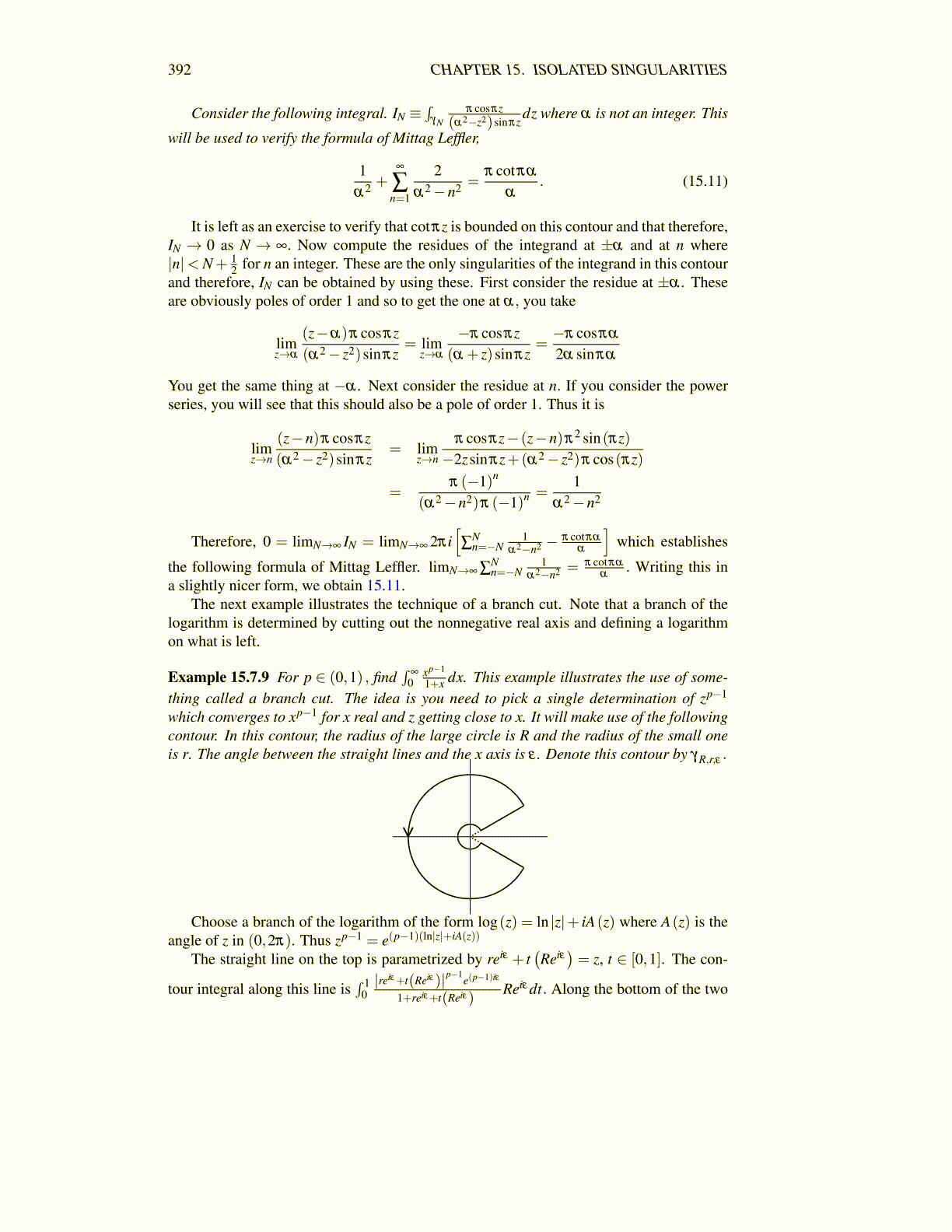
392 CHAPTER 15. ISOLATED SINGULARITIES
Consider the following integral. IN ≡∫
γNπ cosπz
(α2−z2)sinπzdz where α is not an integer. This
will be used to verify the formula of Mittag Leffler,
1α2 +
∞
∑n=1
2α2−n2 =
π cotπα
α. (15.11)
It is left as an exercise to verify that cotπz is bounded on this contour and that therefore,IN → 0 as N → ∞. Now compute the residues of the integrand at ±α and at n where|n|< N+ 1
2 for n an integer. These are the only singularities of the integrand in this contourand therefore, IN can be obtained by using these. First consider the residue at ±α . Theseare obviously poles of order 1 and so to get the one at α, you take
limz→α
(z−α)π cosπz(α2− z2)sinπz
= limz→α
−π cosπz(α + z)sinπz
=−π cosπα
2α sinπα
You get the same thing at −α . Next consider the residue at n. If you consider the powerseries, you will see that this should also be a pole of order 1. Thus it is
limz→n
(z−n)π cosπz(α2− z2)sinπz
= limz→n
π cosπz− (z−n)π2 sin(πz)−2zsinπz+(α2− z2)π cos(πz)
=π (−1)n
(α2−n2)π (−1)n =1
α2−n2
Therefore, 0 = limN→∞ IN = limN→∞ 2πi[∑
Nn=−N
1α2−n2 − π cotπα
α
]which establishes
the following formula of Mittag Leffler. limN→∞ ∑Nn=−N
1α2−n2 = π cotπα
α. Writing this in
a slightly nicer form, we obtain 15.11.The next example illustrates the technique of a branch cut. Note that a branch of the
logarithm is determined by cutting out the nonnegative real axis and defining a logarithmon what is left.
Example 15.7.9 For p ∈ (0,1) , find∫
∞
0xp−1
1+x dx. This example illustrates the use of some-thing called a branch cut. The idea is you need to pick a single determination of zp−1
which converges to xp−1 for x real and z getting close to x. It will make use of the followingcontour. In this contour, the radius of the large circle is R and the radius of the small oneis r. The angle between the straight lines and the x axis is ε . Denote this contour by γR,r,ε .
Choose a branch of the logarithm of the form log(z) = ln |z|+ iA(z) where A(z) is theangle of z in (0,2π). Thus zp−1 = e(p−1)(ln|z|+iA(z))
The straight line on the top is parametrized by reiε + t(Reiε
)= z, t ∈ [0,1]. The con-
tour integral along this line is∫ 1
0|reiε+t(Reiε)|p−1
e(p−1)iε
1+reiε+t(Reiε)Reiε dt. Along the bottom of the two